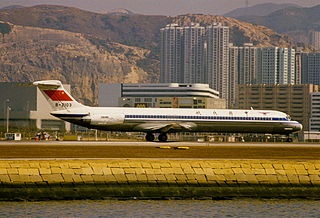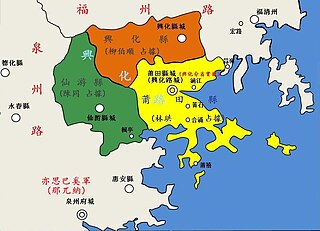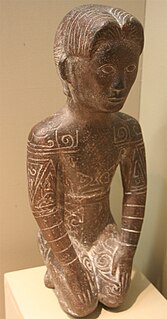 W
W19th Route Army was an army in the Republic of China led by General Cai Tingkai. It gained a good reputation among Chinese for fighting the Japanese in Shanghai in the January 28 Incident in 1932. In 1933-34 it was the main force in the Fuijan Rebellion, which opposed Chiang Kai-shek and unsuccessfully sought an alliance with the Chinese Communists in the Jiangxi Soviet.
 W
WAnping Bridge is a Song dynasty stone beam bridge in Fujian province. It is 2,070 metres (1.29 mi) long. The bridge is also known as the Wuli Bridge because its length is about 5 li, where a li is about 500 meters or 0.3 miles. It is a nationally protected historic site registered with the National Cultural Heritage Administration.
 W
WThe Battle of Fuzhou, or Battle of Foochow, also known as the Battle of the Pagoda Anchorage, was the opening engagement of the 16-month Sino-French War. The battle was fought on 23 August 1884 off the Pagoda Anchorage in Mawei (馬尾) harbour, 15 kilometres to the southeast of the city of Fuzhou (Foochow). During the battle Admiral Amédée Courbet's Far East Squadron virtually destroyed the Fujian Fleet, one of China's four regional fleets.
 W
WChina Eastern Airlines Flight 5398 (MU5398) was a McDonnell Douglas MD-82 airliner from Shenzhen's Bao'an International Airport to Fuzhou Yixu Airport in Fujian. On October 26, 1993, it crashed on approach to Fuzhou Yixu Airport. The aircraft overran the runway while landing in heavy rain and high winds. Two of the 80 passengers and crew on board were killed.
 W
WXinjia Express Hotel, a hotel being used for COVID-19 quarantine in Licheng District, Quanzhou City, Fujian Province, China, collapsed on 7 March 2020.
 W
WDehua porcelain, more traditionally known in the West as Blanc de Chine, is a type of white Chinese porcelain, made at Dehua in the Fujian province. It has been produced from the Ming dynasty (1368–1644) to the present day. Large quantities arrived in Europe as Chinese export porcelain in the early 18th century and it was copied at Meissen and elsewhere. It was also exported to Japan in large quantities.
 W
WThe Gutian Congress or Gutian Conference was the 9th meeting of the 4th Red Army and the first after the Nanchang Uprising and the subsequent southward flight of the rebel troops. It was convened in December 1929 in the town of Gutian in Shanghang County, Fujian Province.
 W
WThe Fujian People's Government is the common name for the People's Revolutionary Government of the Republic of China (1933–1934), also known as the Fujian People's Government, was a short-lived anti-Kuomintang government in the Chinese Republic's Fujian Province. The rebellion that led to its formation and its collapse are known as the Fujian Incident or Fujian Rebellion.
 W
WThe Han campaigns against Minyue were a series of three Han military campaigns dispatched against the Minyue state. The first campaign was in response to Minyue's invasion of Eastern Ou in 138 BC. In 135 BC, a second campaign was sent to intervene in a war between Minyue and Nanyue. After the campaign, Minyue was partitioned into Minyue, ruled by a Han proxy king, and Dongyue. Dongyue was defeated in a third military campaign in 111 BC and the former Minyue territory was annexed by the Han Empire.
 W
WThe Ispah rebellion was a series of civil wars in the middle of 14th century in Fujian during the Yuan dynasty. The term Ispah might derive from the Persian word "سپاه" (sepâh), meaning "army" or "Sepoy". Thus, the rebellion is also known as the Persian Sepoy rebellion in Chinese documents.
 W
WJian ware or Chien ware is a type of Chinese pottery originally made in Jianyang, Fujian province. It, and local imitations of it, is known in Japan as Tenmoku (天目). The ware are simple shapes in stoneware, with a strong emphasis on subtle effects in the glazes. In the Song dynasty they achieved a high prestige, especially among Buddhist monks and in relation to tea-drinking. They were also highly valued in Japan, where many of the best examples were collected. Though the ceramic body is light-coloured, the wares, generally small cups for tea, bowls and vases, normally are glazed in dark colours, with special effects such as the "hare's fur" "oil-spot" and "partridge feather" patterns caused randomly as excess iron in the glaze is forced out during firing.
 W
WJiangzhe province (江浙行省) was a province of the Yuan dynasty established in 1276. It included the southern portion of Jiangsu south of the Yangtze River, Zhejiang, Fujian and part of northern Guangdong. With capital was initially at Yangzhou, but in 1297 it was moved to Hangzhou Lu.
 W
WJingnan, also known as Nanping and Northern Chu (北楚) in historiography, was one of the Ten Kingdoms in south-central China created in 924, marking the beginning of the Five Dynasties and Ten Kingdoms period (907–960).
 W
WThe Kucheng massacre was a massacre of Western Christians that took place at Gutian Fujian, China on August 1, 1895. At dawn of that day, a fasting folk religious group attacked British missionaries who were then taking summer holidays at Gutian Huashan, killing eleven people and destroying two houses. The Kucheng Massacre is considered one of the worst attacks against foreigners in China prior to the Boxer Movement in 1899–1901, the only comparable event in China's missionary history being the Tianjin Massacre in 1870.
 W
WMinyue was an ancient kingdom in what is now Fujian province in southern China. It was a contemporary of the Han dynasty, and was later annexed by the Han empire as the dynasty expanded southward. Its inhabitants were groups of indigenous non-Chinese tribes called the Baiyue. The kingdom survived roughly from 334–110 BC.
 W
WAs trade was an important source of wealth for the Yue tribes of coastal China, the region south of the Yangtze River attracted the attention of Emperor Qin Shi Huang, and he undertook a series of military campaigns to conquer it. Lured by its temperate climate, fertile fields, maritime trade routes, relative security from warring factions to the west and northwest, and access to luxury tropical products from Southeast Asia, the emperor sent armies to conquer the Yue kingdoms in 221 BC. Military expeditions against the region were dispatched between 221 and 214 BC. It would take five successive military excursions before the Qin finally defeated the Yue in 214 BC.
 W
WThe Quanzhou Ship (泉州湾古船), or Quanzhou wreck, was a 13th-century Chinese seagoing sailing junk that sank near the city of Quanzhou in Fujian Province, and was discovered in 1973. It remains one of the most important marine archaeology finds in China, and is an important piece of physical evidence about the shipbuilding techniques of the Song China and the international maritime trade of the period.
 W
WThe Shen-kuang-szu Incident was a series of events that took place between 1850 and 1851 in Fuzhou, China and was marked as one of the earliest conflicts between local Chinese and foreign Protestant missionaries. It began in June 1850 when two English missionaries rented rooms in a temple known as the Shen-kuang-szu on Wu-shih-shan within the walled city of Fuzhou. In the months that followed, local Chinese gentry and officials attempted in various ways to evict the missionaries from the hill, but all their efforts apparently failed. The controversy was settled the following year in October with the terms of the agreement stating that the missionaries were allowed to stay behind. This led to great discontentment amongst the local gentry and eventually foreshadowed yet another more important missionary incident - the 1878 Wu-shih-shan Case.
 W
WThe Southward expansion of the Han dynasty was a series of Chinese military campaigns and expeditions in what is now modern Southern China and Northern Vietnam. Military expansion to the south began under the previous Qin dynasty and continued during the Han era. Campaigns were dispatched to conquer the Yue tribes, leading to the annexation of Minyue by the Han in 135 BC and 111 BC, Nanyue in 111 BC, and Dian in 109 BC.
 W
WTaiwan under Qing rule refers to the rule of the Qing dynasty over Formosa from 1683 to 1895. The Qing court sent an army led by general Shi Lang and annexed Taiwan in 1683. It was governed as Taiwan Prefecture of Fokien Province (Fujian) until the declaration of Fokien-Taiwan Province in 1887. Qing rule over Taiwan ended when Taiwan was ceded to Japan by the Treaty of Shimonoseki in 1895.
 W
WThe Tiandihui, the Heaven and Earth Society, also called Hongmen, is a Chinese fraternal organization and historically, a secretive folk religious sect in the vein of the Ming loyalist White Lotus Sect, the Tiandihui's ancestral organization. As the Tiandihui spread through different counties and provinces, it branched off into many groups and became known by many names, including the Sanhehui. The Hongmen grouping is today more or less synonymous with the whole Tiandihui concept, although the title "Hongmen" is also claimed by some criminal groups. Its current iteration is purely secular.
 W
WThe Baiyue, Hundred Yue, or simply Yue, were various ethnic groups who inhabited the regions of Southern China to Northern Vietnam in the 1st millennium BC and 1st millennium AD. They were known for their short hair, body tattoos, fine swords, and naval prowess.
 W
WYuegang was a seaport situated at the estuary of the Jiulong River near Zhangzhou in Fujian, China. Known as a smuggling hub since the early Ming dynasty, Yuegang rose to prominence in the 16th century as the Ming government cracked down on other hubs of private maritime trade, deemed illegal at the time due to the isolationist haijin laws. When the prohibitions were lifted in 1567, Yuegang was designated as the port in Fujian from where it is legal to trade overseas. Since then, it flourished as the Chinese terminus of the trans-Pacific trade carried by the Manila galleon through its trade with the Spanish Philippines until it was overshadowed by Xiamen in the 17th century.